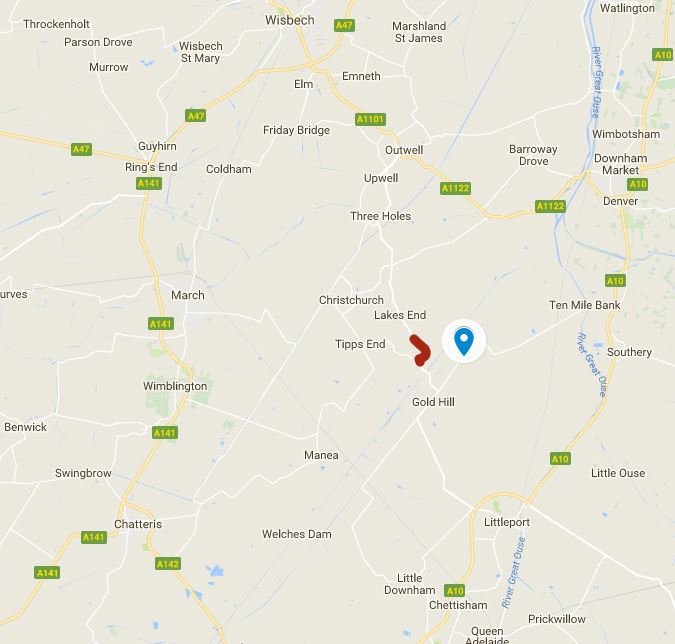A Fungi That Could Eat You From The Inside Out: The Threat Of Climate Change

Table of Contents
Rising Temperatures and Fungal Pathogenicity
Increased temperatures are fundamentally altering the landscape of fungal diseases. Warmer conditions expand the geographical range of fungal pathogens, allowing them to thrive in previously inhospitable environments. This expansion brings these dangerous organisms into contact with new populations, increasing the risk of infection. Higher temperatures also significantly impact fungal reproduction and spore dispersal, leading to a greater number of infectious particles in the environment.
Several fungi are already exhibiting increased virulence due to climate change. Candida auris, a particularly dangerous multi-drug-resistant yeast, is a prime example. Its ability to survive and spread in warmer climates is alarming. Similarly, Aspergillus fumigatus, a common mold responsible for aspergillosis, shows heightened pathogenicity in warmer temperatures.
The mechanisms behind this increased pathogenicity are complex but include:
- Increased metabolic activity: Warmer temperatures boost fungal metabolism, accelerating growth and reproduction.
- Enhanced toxin production: Higher temperatures can stimulate the production of mycotoxins, potent compounds that damage human cells and compromise the immune system.
- Altered host immune responses: Warmer temperatures can suppress the immune system, making individuals more vulnerable to fungal infections.
Climate Change and Weakened Immune Systems
Climate change is not merely expanding the reach of fungal pathogens; it is also weakening our defenses against them. Environmental stressors directly linked to climate change, such as air pollution and extreme weather events, significantly compromise the immune system. These stressors create a perfect breeding ground for fungal infections to flourish.
Furthermore, climate change exacerbates food insecurity, leading to malnutrition, a major contributor to weakened immune responses. This creates a vicious cycle where climate change weakens our defenses, making us more susceptible to the very fungal infections that climate change is spreading.
Specifically, climate change impacts immune function through:
- Increased prevalence of malnutrition due to climate change: Reduced crop yields and disrupted food supply chains compromise nutritional intake.
- Heat stress weakening immune defenses: Extreme heat can suppress immune cell function, leaving individuals vulnerable to infection.
- Increased exposure to environmental pollutants: Climate change worsens air quality, exposing populations to harmful substances that damage the immune system.
The Spread of Fungal Diseases through Environmental Changes
Changes in precipitation patterns and humidity are also significant factors in the spread of fungal diseases. Increased rainfall and humidity create ideal conditions for fungal growth, leading to higher rates of infection. Flooding, a consequence of increasingly intense rainfall events, can create vast breeding grounds for fungi in stagnant water.
Rising sea levels create new, saline environments that can support the growth of previously unstudied halotolerant fungi, expanding the fungal habitat and potentially introducing new pathogens. Altered vegetation patterns, caused by changes in temperature and rainfall, influence fungal habitats, impacting their interaction with humans and animals. This alteration can lead to increased exposure to previously rare or isolated fungal species.
Consider these factors:
- Flooding creating ideal conditions for fungal growth: Waterlogged soil and standing water provide ample opportunities for fungi to thrive.
- Changes in rainfall patterns impacting fungal spore dispersal: Wind and water currents distribute fungal spores more widely in altered weather conditions.
- Increased humidity leading to higher rates of fungal infections: High humidity promotes fungal growth and spore germination.
Healthcare Implications and Future Predictions
The rise in climate change-fueled fungal infections is placing an immense strain on healthcare systems globally. Diagnosing and treating these infections can be challenging, particularly in resource-limited settings. Many fungal pathogens are resistant to existing antifungal drugs, necessitating the development of new treatments. The economic burden of these infections is also substantial, adding to the already significant costs of healthcare.
Future predictions suggest a continued and likely accelerated increase in the prevalence of climate change-fueled fungal diseases. This necessitates improved surveillance systems to track emerging fungal pathogens and their spread. International collaboration is essential to address this growing global health threat effectively.
Key healthcare concerns include:
- Increased healthcare costs due to fungal infections: Treatment and management of these infections are expensive and resource-intensive.
- Difficulty in diagnosing and treating emerging fungal pathogens: Rapid identification and effective treatment strategies are crucial but often lacking.
- Need for global collaboration to address this growing threat: A coordinated international effort is needed to combat this global health challenge.
Conclusion: Combating the Threat of Climate Change-Fueled Fungal Infections
The link between climate change and the rise of dangerous fungal infections is undeniable. The impact on human health is substantial, and the challenges ahead are significant. Addressing climate change is not just about mitigating environmental damage; it is crucial for protecting global health. The threat of climate change-fueled fungal infections underscores the urgency of taking decisive action.
Understanding the threat of climate change-fueled fungal infections is crucial. Learn more and take action to protect yourself and future generations. Support initiatives dedicated to combating climate change and advocate for policies that prioritize public health and the development of effective antifungal treatments. Together, we can mitigate this emerging threat and safeguard global health.

Featured Posts
-
 Sundays Memorial Service Honors Hells Angels Craig Mc Ilquham
May 25, 2025
Sundays Memorial Service Honors Hells Angels Craig Mc Ilquham
May 25, 2025 -
 Jenson Fw 22 Extended A Deeper Look At The Collection
May 25, 2025
Jenson Fw 22 Extended A Deeper Look At The Collection
May 25, 2025 -
 M62 Westbound Road Closure Resurfacing Works Manchester To Warrington
May 25, 2025
M62 Westbound Road Closure Resurfacing Works Manchester To Warrington
May 25, 2025 -
 I Naomi Kampel Kai Oi Eksotikes Tis Diakopes Stis Maldives Fotografies Me Mpikini
May 25, 2025
I Naomi Kampel Kai Oi Eksotikes Tis Diakopes Stis Maldives Fotografies Me Mpikini
May 25, 2025 -
 Match Monaco Nice Annonce De La Composition D Equipe
May 25, 2025
Match Monaco Nice Annonce De La Composition D Equipe
May 25, 2025
Latest Posts
-
 A Cinematic Glasgow Martin Compstons Thriller And The Citys Transformation
May 25, 2025
A Cinematic Glasgow Martin Compstons Thriller And The Citys Transformation
May 25, 2025 -
 The Skinny Jab Revolution Black 47 And Roosters Todays Top Streaming And Tv Shows
May 25, 2025
The Skinny Jab Revolution Black 47 And Roosters Todays Top Streaming And Tv Shows
May 25, 2025 -
 A Look At Tim Rices Lyrics In Disneys Land Of Sometimes
May 25, 2025
A Look At Tim Rices Lyrics In Disneys Land Of Sometimes
May 25, 2025 -
 Glasgows Gritty Glamour How Martin Compstons Thriller Reimagines The City
May 25, 2025
Glasgows Gritty Glamour How Martin Compstons Thriller Reimagines The City
May 25, 2025 -
 Tim Rices Contribution To The Soundtrack Of Land Of Sometimes
May 25, 2025
Tim Rices Contribution To The Soundtrack Of Land Of Sometimes
May 25, 2025
